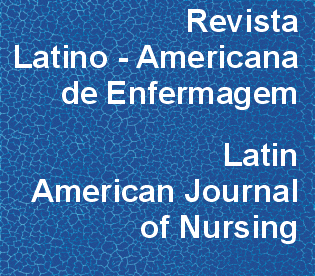Associação das variáveis socioeconômicas e clínicas com o estado de fragilidade entre idosos hospitalizados
DOI:
https://doi.org/10.1590/0104-1169.0660.2657Resumo
Objetivos: identificar a prevalência de fragilidade entre idosos internados em um Hospital de Clínicas e verificar a associação das características socioeconômicas e clínicas com o estado de fragilidade. Método: estudo observacional, analítico e transversal, conduzido com 255 idosos hospitalizados. Utilizaram-se: instrumento estruturado para os dados socioeconômicos e clínicos e fenótipo de fragilidade de Fried. Realizou-se análise estatística descritiva e bivariada, por meio dos testes quiquadrado e ANOVA One-way (p<0,05). Resultados: a prevalência de fragilidade correspondeu a 26,3%, enquanto a pré-fragilidade representou 53,3%. Constatou-se maior proporção de idosos frágeis com 80 anos ou mais (p=0,004), viúvos (p=0,035) e com maior média de dias de internação (p=0,006). Conclusão: idosos internados apresentaram elevados percentuais dos estados de fragilidade associados às variáveis socioeconômicas e tempo de internação. A identificação das condições de saúde relacionadas à pré-fragilidade e fragilidade pode favorecer o planejamento e implementação da assistência ao idoso neste contexto.Downloads
Os dados de download ainda não estão disponíveis.
Downloads
Publicado
2015-12-01
Edição
Seção
Artigos Originais
Licença
Os direitos autorais são de propriedade exclusiva da revista, transferidos por meio da Declaração de Transferência de Direitos Autorais (presente no Formulário Individual de Declarações) assinada pelos autores. Para a utilização dos artigos, a RLAE adota a Licença Creative Commons, CC BY-NC Atribuição não comercial (resumo ou código completo da licença). Com essa licença é permitido acessar, baixar (download), copiar, imprimir, compartilhar, reutilizar e distribuir os artigos, desde que para uso não comercial e com a citação da fonte, conferindo os devidos créditos autorais a Revista Latino-Americana de Enfermagem. Nesses casos, nenhuma permissão é necessária por parte dos autores ou dos editores.Como Citar
Tavares, D. M. dos S., Nader, I. D., Paiva, M. M. de, Dias, F. A., & Pegorari, M. S. (2015). Associação das variáveis socioeconômicas e clínicas com o estado de fragilidade entre idosos hospitalizados . Revista Latino-Americana De Enfermagem, 23(6), 1121-1129. https://doi.org/10.1590/0104-1169.0660.2657



